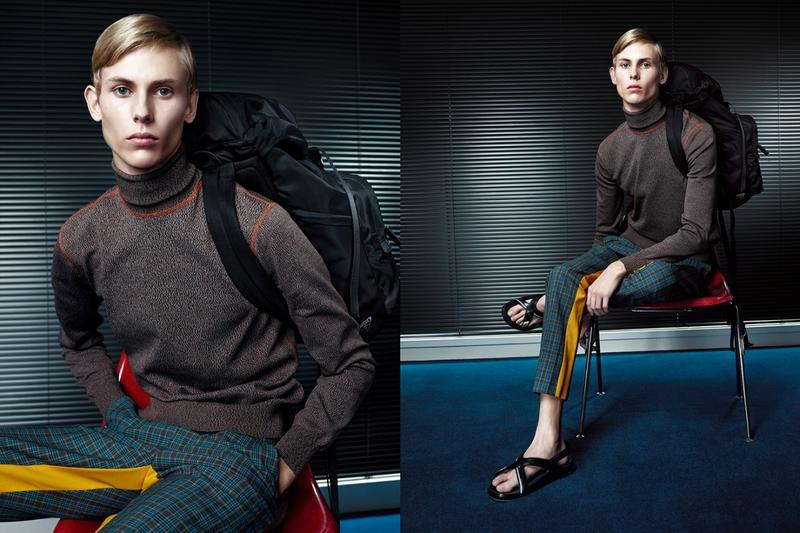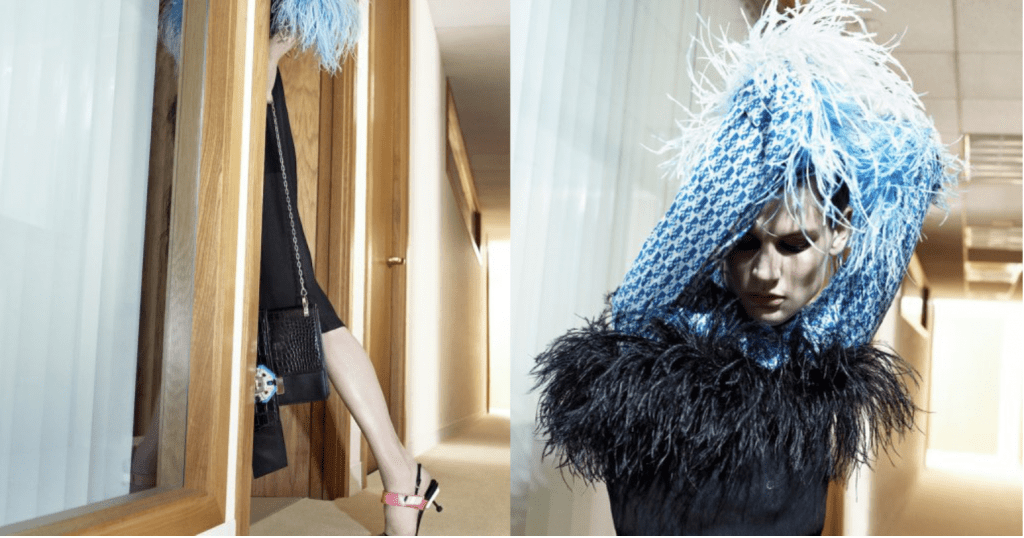Meet #Prada365. The struggling Italian brand has announced that it will vastly alter its traditional advertising strategy to comprise what it calls a “continuous visual data stream.” Per 10 Magazine, the new tactic, entitled, Prada365, will “encompass print, online and social media, rejecting the idea of a singular campaign each season.” The new ad initiative will be less structured, more spontaneous, a collaboration of sorts featuring the work of an array of different concepts, settings, models, and photographers with a renewed focus on the brand’s actual products themselves.
Prada – the brand that captivates the fashion industry’s attention each and every season with its offhand elegance and ugly-pretty aesthetic – is in need of significant changes, after all, and has been for some time. Over the past several years, it has become the poster child for the floundering luxury sector. Sales dropped significantly in Asia, its largest market, over the past several quarters. It has been hurt by collapsing demand in China, the strong dollar and terror attacks in Europe. Its chief financial officer quit less than a year ago after more than a decade with the company, and the company’s shares fell more than 40 percent in 2016, dropping below their 2011 initial public offering price of HK$39.50 at times.
A consistent string of disappointing sales and revenue reports (in April, Prada reported its lowest profit in five years), in particular, and the specific drop in sales of its leather goods proved that the brand’s runway allure simply was not translating into sales in a meaningful way and the Miuccia Prada-run label vowed that a turnaround was on the horizon.
Since then, the brand announced in August that it predicted a return to sales and profit growth in 2017. Prada said in a statement this summer that it views 2016 as “a turning point from where the group will return to growth.” The company’s Chairman Carlo Mazzi confirmed that message, saying, “We expect growth to come back after this year.” As for what – exactly – would enable turning point was somewhat unclear until now.
We have known that the brand – having opened more brick-and-mortar stores than most of its mega-brand rivals in the past few years and raised the price of many of its handbags – would try to right its course by introducing more accessible products (read: less expensive handbags) and streamlining its sizable retail network. Prada also aimed to differentiate itself from similarly situated brands by rolling out a new store concept in Hong Kong, Shanghai, Zurich and Moscow to entice customers into its shops, creating a different atmosphere for each product category.
Still yet, in April, the brand announced plans to double its e-commerce sales over the next two years by increasing the number of categories it offers online, particularly in connection with its footwear, and expanding its social media activities, including adopting millennial app of choice, Snapchat, says Strategic Marketing Director Stefano Cantino.
Upping its presence online, and its adoption of an e-commerce strategy is an interesting – but arguably very necessary – move given Ms. Prada’s stance on e-commerce. She has been quite vocal about her distaste for it, saying a number of years ago: “We don’t like it. I don’t care. My husband [Prada’s Chief Executive Patrizio Bertelli] hates it and we think for luxury it’s not right.” Unsurprisingly, the brand is not going all-in online, at least, not yet. For instance, Prada has said it does not plan to sell clothing over the Internet. Instead, it will direct consumers to its 618 stores for garment purchases.

With such initiatives in mind, Prada365 seems to be just one facet of the brand’s much larger overhaul aimed at luring consumers back and returning to revenue grace, which it hopes to achieve by better distinguishing itself from its luxury rivals. As Fabio Zambernardi, Prada’s design director said recently, “We wanted to try how that could be different. Why don’t we just do smaller concepts, faster, more immediate, showing different women? We always show so many different types of women anyway, and Miuccia liked the idea of appealing to different points of view.” The Spring/Summer 2017 campaign signals the debut of 365. Prada has released the first images from the campaign, which are divided into five different themes: Pathways, Frontiers, Stations, Exits and Terrains, and star actor Jude Law, and models Oliver Houlby, Saskia de Brauw, and Sara Grace Wallerstedt, among others, shot by Willy Vanderperre.
Looking beyond advertising and social media, analysts expect it will take time for Prada’s lack of perceived exclusivity to recover as competition becomes fiercer from new Western and Asian brands, while a revived Gucci under new leadership continues to steal market share.











